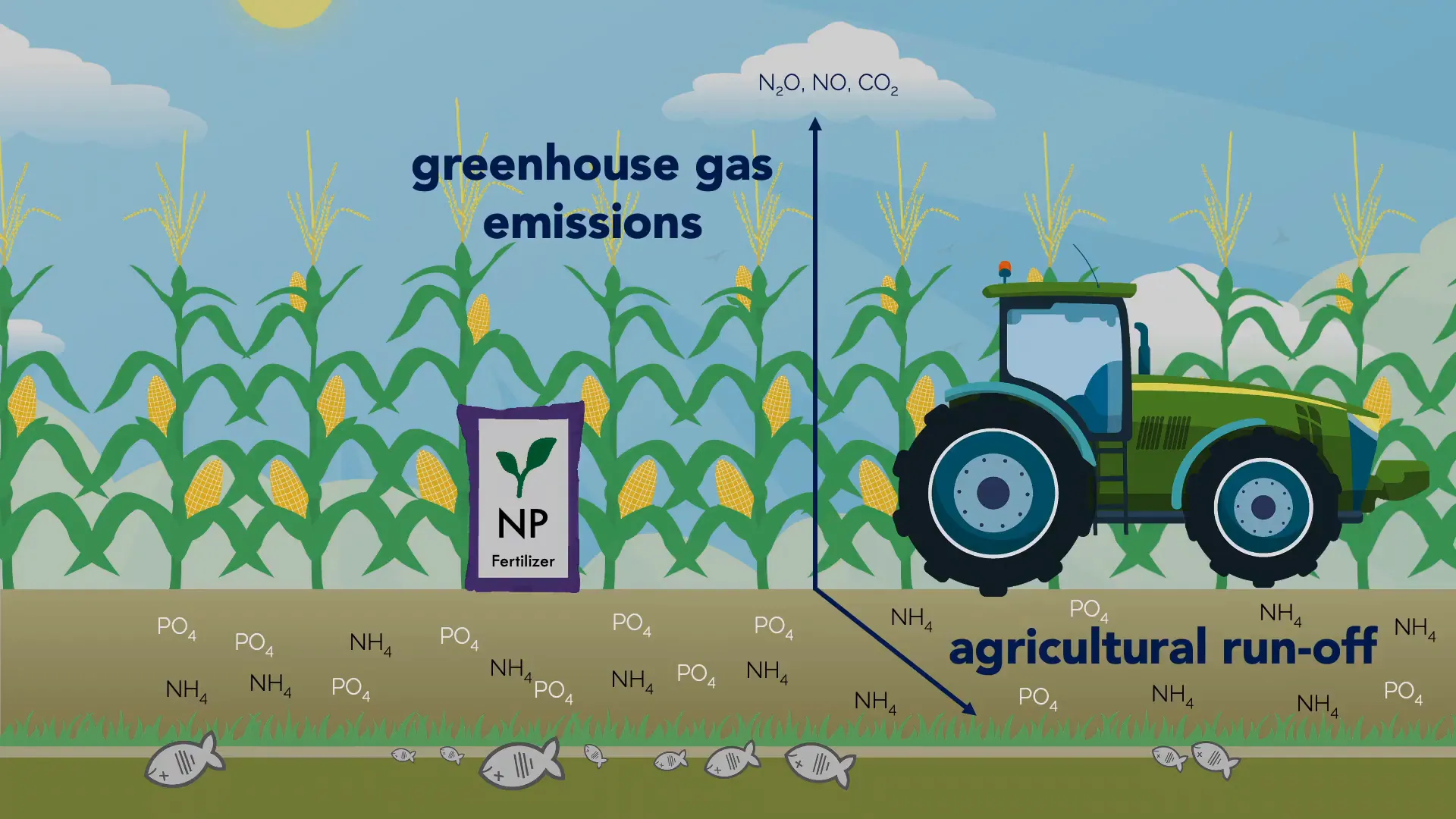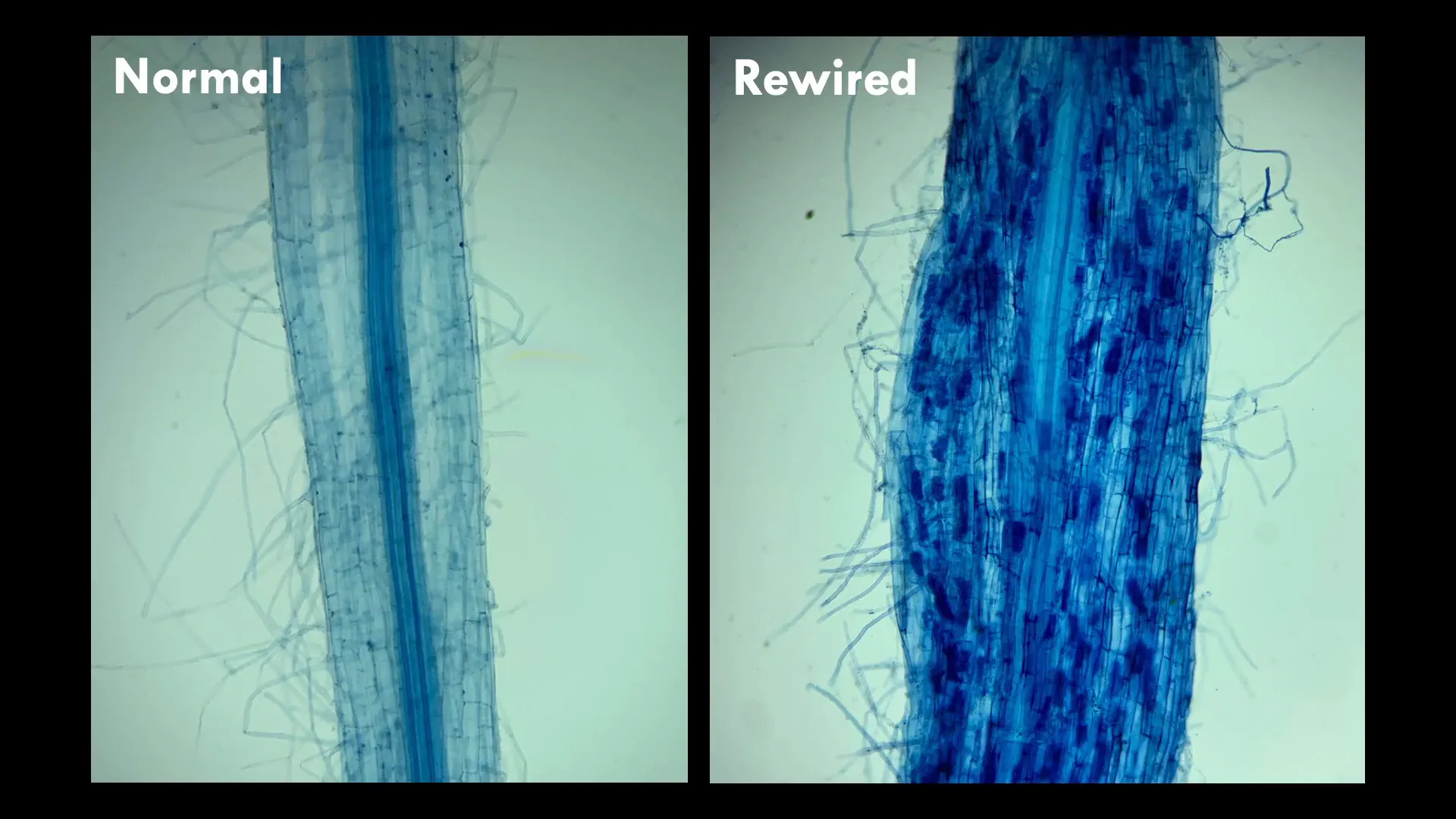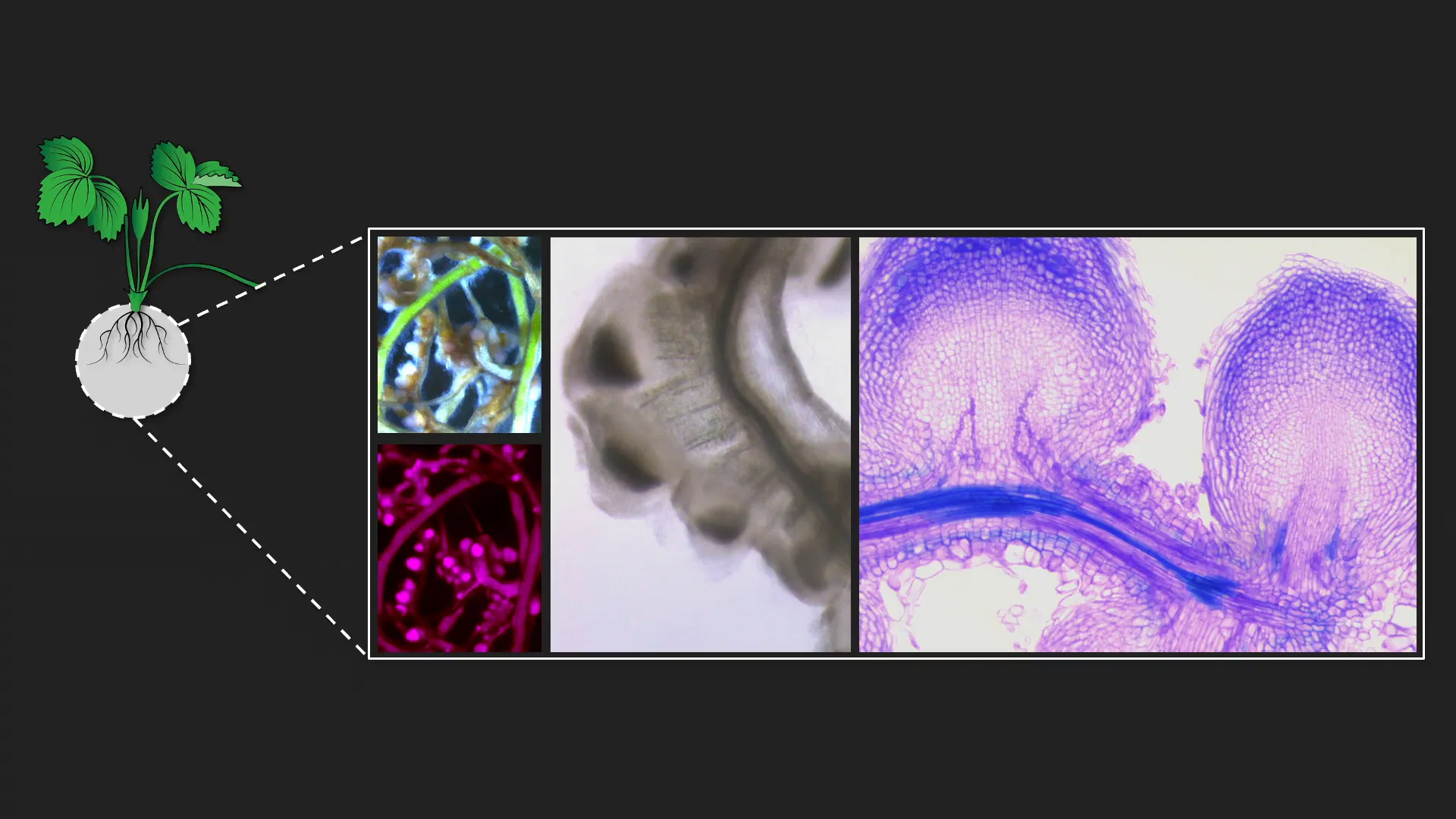May 20, 2025
Harnessing Nature: The Future of Sustainable Food Production
In a world where sustainable farming practices are crucial for our planet’s health, the soybean plant stands out as a remarkable model for future agriculture. Join me as we explore the unique relationships between soybeans, bacteria, and fungi that could revolutionize our food systems and reduce our reliance on harmful fertilizers.
The Soybean Plant: A Sustainable Prototype
The soybean plant is more than just a staple in agriculture; it's a beacon of sustainable food production. Its unique ability to form symbiotic relationships with nitrogen-fixing bacteria and mycorrhizal fungi sets it apart. These relationships allow soybeans to thrive without heavy reliance on synthetic fertilizers, making them a model for sustainable farming.
At the core of this process are the nodules on the roots of the soybean plant. Inside these nodules, millions of bacteria work tirelessly to capture atmospheric nitrogen, converting it into ammonia. This ammonia is then utilized by the soybean plant to create essential biological compounds like DNA, RNA, and proteins. The soybean, in turn, provides these bacteria with carbon in the form of sugars, creating a mutually beneficial relationship.

Understanding Nitrogen Fixation
Nitrogen fixation is a critical process for plant health. Plants require nitrogen to synthesize vital components, yet they cannot access the nitrogen gas that constitutes about 78% of our atmosphere. Only specific bacteria, equipped with the nitrogenase enzyme, can convert this inert nitrogen into ammonia, a form usable by plants.
This process highlights the importance of bacteria in agriculture. By utilizing nitrogen-fixing bacteria, plants can obtain the nutrients they need without the environmental impact of chemical fertilizers. The soybean plant exemplifies this relationship, showcasing how nature has devised efficient methods of nutrient acquisition.
The Role of Nitrogenase Enzyme
The nitrogenase enzyme is the key player in the nitrogen fixation process. Found in nitrogen-fixing bacteria, this enzyme catalyzes the conversion of atmospheric nitrogen into ammonia. This transformation is vital for plant growth, as it provides a direct source of nitrogen that can be assimilated into plant tissues.
Understanding the function of nitrogenase offers insights into enhancing crop efficiency. By potentially transferring the genetic pathways responsible for nitrogen fixation from legumes, like soybeans, to cereal crops, we could revolutionize agricultural practices. This would not only improve food security but also reduce our dependency on chemical fertilizers.
Mutualistic Symbiosis Explained
Mutualistic symbiosis is a fascinating aspect of plant biology. In the case of soybeans, the relationship between the plant and its nitrogen-fixing bacteria is a perfect example. Both parties benefit: the plant receives nitrogen, while the bacteria gain carbohydrates as food.
This symbiotic relationship extends beyond just bacteria; it includes mycorrhizal fungi as well. These fungi enhance nutrient uptake, particularly phosphates, which are crucial for plant development. The collaboration between soybeans, bacteria, and fungi creates a robust system that supports sustainable agriculture.
The Power of Mycorrhizal Fungi
Mycorrhizal fungi play a significant role in the health of the soybean plant. These fungi colonize the roots and extend into the surrounding soil, increasing the plant's ability to absorb water and nutrients. This symbiosis is particularly beneficial in nutrient-poor soils, where the fungi can access resources unavailable to the plant alone.
Through their extensive networks, mycorrhizal fungi improve soil structure and health, promoting overall ecosystem sustainability. This relationship underscores the importance of maintaining healthy soil microbiomes in agricultural practices.

Nutrient Uptake Efficiency
The efficiency of nutrient uptake is crucial for maximizing crop yields. The soybean plant, through its symbiotic relationships, demonstrates an effective model for nutrient acquisition. By leveraging both nitrogen-fixing bacteria and mycorrhizal fungi, soybeans can meet their nutrient needs with minimal external inputs.
In contrast, conventional agricultural practices often rely heavily on synthetic fertilizers, which can lead to nutrient runoff and environmental degradation. By adopting a model similar to the soybean plant, farmers can enhance nutrient uptake efficiency while reducing their environmental footprint.
The Benefits of Microbial Associations
Microbial associations, such as those formed by soybeans with nitrogen-fixing bacteria and mycorrhizal fungi, offer numerous advantages. These relationships lead to improved soil health, increased resilience against pests and diseases, and enhanced nutrient availability.
Moreover, these microbial partnerships can lead to reduced fertilizer costs for farmers, making sustainable practices economically viable. As we explore the potential of these associations, it becomes clear that fostering microbial health in our soils is key to the future of agriculture.
Challenges in Modern Agriculture
Despite the advantages of microbial associations, modern agriculture faces significant challenges. The widespread use of inorganic fertilizers has led to environmental issues, including soil degradation and water pollution. Smallholder farmers often lack access to these inputs, leading to decreased productivity and food insecurity.
To address these challenges, researchers are working on innovative solutions to mimic the nutrient-acquisition strategies of the soybean plant. By enhancing the ability of cereal crops to engage with beneficial microbes, we can create a more sustainable agricultural system. This approach not only aims to reduce fertilizer dependence but also strives to improve overall soil health.

For more insights on entrepreneurial ecosystems that can support sustainable practices, visit GFunnel. Explore how our platform connects entrepreneurs and creators to foster innovative solutions for the agricultural sector.
The ENSO Project: A New Approach
The ENSO Project represents a groundbreaking initiative aimed at transforming how we view and utilize agricultural practices. By focusing on the natural partnerships between plants and microorganisms, we seek to emulate the successful nutrient acquisition strategies of legumes, such as soybeans, and apply them to cereal crops. This innovative approach aims to reduce our reliance on synthetic fertilizers, which have long been a staple in modern agriculture.
At the heart of the ENSO Project is the understanding that most plants have the innate ability to engage with beneficial microbes in their environment. Our goal is to harness these natural relationships to promote sustainability in farming practices. By unlocking the potential of these microbial associations, we can enhance crop resilience, improve nutrient uptake, and reduce environmental impacts associated with conventional farming.

Fungal Symbiosis in Cereal Crops
Fungal symbiosis is not just limited to legumes; it's a widespread phenomenon across the plant kingdom. Cereal crops, such as wheat and barley, also have the potential to engage with mycorrhizal fungi, which play a critical role in nutrient absorption. However, the challenge arises when these crops are fertilized, as they tend to disengage from their fungal partners, relying instead on the nutrients provided by fertilizers.
To maximize the benefits of fungal symbiosis in cereal crops, we need to encourage a more proactive engagement between plants and fungi, even in nutrient-rich environments. This requires not only an understanding of the underlying genetic factors but also the development of strategies that promote these beneficial interactions.

Maximizing Fungal Utilization
To truly capitalize on the advantages of fungal symbiosis, we must enhance the ability of cereal crops to interact with mycorrhizal fungi. Our research has identified specific genetic regulators that control this engagement. By manipulating these regulators, we can encourage plants to form partnerships with fungi even when fertilized.
This proactive approach can significantly increase the amount of mycorrhizal fungi present in the roots of our crops, leading to improved nutrient uptake and overall plant health. In our field trials, we've observed that barley plants with rewired genetic pathways can uptake ten times more fungal biomass, illustrating the power of genetic manipulation in agriculture.

Genetic Regulators of Fungal Engagement
Understanding the genetic regulators involved in fungal engagement is key to our success. These proteinaceous regulators are typically activated under nutrient-starved conditions, prompting plants to seek out fungal partners. However, we've developed methods to 'rewire' these systems, allowing plants to engage with fungi regardless of nutrient availability.
This innovation not only enhances nutrient absorption but also reduces fertilizer dependency. By fostering a strong relationship with mycorrhizal fungi, crops can access essential nutrients like phosphates and nitrates more efficiently, contributing to sustainable agricultural practices.

Field Trials and Results
Our field trials have yielded promising results, demonstrating the effectiveness of our approach. By implementing genetic modifications, we've been able to increase fungal colonization in cereal crops significantly. These trials are crucial for understanding how we can maintain high productivity levels while reducing chemical fertilizer inputs.
The data collected from these trials will guide us in refining our techniques and ensuring that we can replicate these results on a larger scale. The shift towards utilizing natural microbial associations represents a pivotal change in agricultural practices, one that could redefine how we approach crop production.

The Future of Fertilizer Use
The future of fertilizer use lies in our ability to integrate natural microbial partnerships into conventional farming. By reducing our reliance on synthetic fertilizers, we can mitigate environmental pollution and greenhouse gas emissions associated with their production and application. The ENSO Project aims to pave the way for a more sustainable agricultural landscape, where crops thrive through their natural relationships with soil microorganisms.
As we continue to explore these avenues, it's essential for farmers and agricultural stakeholders to embrace these changes. By investing in research and adopting practices that support microbial health, we can create a resilient and sustainable food system.

Transferring Nitrogen Fixation to Cereal Crops
One of the most ambitious goals of the ENSO Project is transferring nitrogen-fixing capabilities from legumes to cereal crops. While legumes have perfected the art of nitrogen fixation through their symbiotic relationships with specific bacteria, cereal crops have not yet tapped into this potential.
Our research shows that the genetic pathways responsible for nitrogen fixation are already present in cereal crops. By identifying and manipulating these genes, we can engineer cereals to engage with nitrogen-fixing bacteria, similar to how soybeans do. This could revolutionize nitrogen availability in agriculture, providing crops with a sustainable source of this essential nutrient.
Identifying Key Genes for Symbiosis
Identifying the key genes involved in symbiotic relationships is crucial for our success. The symbiosis signaling pathway, for example, plays a pivotal role in how plants recognize and engage with beneficial bacteria and fungi. By understanding this pathway, we can manipulate it to enhance the ability of cereal crops to form these vital partnerships.
Our ongoing genetic dissection aims to uncover the specific genes and their functions, allowing us to engineer crops that can thrive in nutrient-poor conditions without relying heavily on fertilizers. This research is foundational for the future of sustainable agriculture.
Understanding the Symbiosis Signaling Pathway
The symbiosis signaling pathway is a critical component in the interaction between plants and beneficial microorganisms. In soybeans, this pathway enables the plant to recognize nitrogen-fixing bacteria in the soil. When the plant detects these bacteria, it triggers a series of cellular responses, leading to the formation of nodules where the bacteria can reside and perform nitrogen fixation.
This pathway is not unique to legumes. Cereal crops also possess similar signaling mechanisms. By understanding and manipulating these pathways, we can engineer cereal crops to engage more effectively with nitrogen-fixing bacteria, ultimately enhancing their nutrient uptake capabilities.
Re-networking Genetic Components
One of the most exciting aspects of our research is the re-networking of existing genetic components. The genes involved in nitrogen fixation are not exclusive to legumes; they are found in cereal crops as well. This means we can utilize these pre-existing genetic components and modify them to facilitate nitrogen-fixing capabilities in non-leguminous plants.
This approach is advantageous because it simplifies the engineering process. Instead of creating new genetic sequences from scratch, we can repurpose existing ones, making it feasible to develop crops that can thrive with less reliance on synthetic fertilizers.

Engineering Nodules in Non-legumes
Our team has made significant strides in engineering nodules in non-leguminous plants. While these engineered nodules currently do not host nitrogen-fixing bacteria, the groundwork has been laid for future success. By focusing on the genetic components involved in nodule formation, we aim to create environments conducive to bacterial colonization.
This advancement could lead to a new generation of crops capable of fixing atmospheric nitrogen, similar to soybeans. The implications for agricultural sustainability are profound, as such crops would reduce the need for chemical fertilizers and promote healthier soils.
A Vision for Nitrogen Fixing Cereals
The vision for nitrogen-fixing cereals is not just a dream; it is an achievable goal within our reach. By harnessing the power of genetic engineering and the knowledge gained from legumes, we can create cereal crops that actively engage with nitrogen-fixing bacteria. This could lead to a paradigm shift in how we approach crop production.
Imagine a world where cereal crops can thrive in nutrient-poor soils, significantly reducing the environmental impact of traditional farming methods. This vision aligns with the mission of GFunnel, fostering an ecosystem where innovative agricultural solutions can flourish.
The Microbial Revolution: A Sustainable Future
The next green revolution is poised to be a microbial revolution. By utilizing beneficial fungi and bacteria, we can create sustainable agricultural systems that do not rely heavily on synthetic fertilizers. This approach not only supports crop production but also enhances soil health and biodiversity.
As we continue to explore the potential of microbial associations, we can develop technologies that are accessible to all farmers, including smallholders who often lack access to modern agricultural inputs. This democratization of agricultural innovation is essential for addressing global food security challenges.
FAQ: Common Questions About Sustainable Food Production
What is nitrogen fixation, and why is it important?
Nitrogen fixation is the process by which certain bacteria convert atmospheric nitrogen into a form that plants can use, such as ammonia. This process is vital for plant growth as nitrogen is an essential nutrient required for synthesizing DNA, RNA, and proteins.
How do mycorrhizal fungi benefit plants?
Mycorrhizal fungi form symbiotic relationships with plant roots, enhancing nutrient and water uptake. They expand the root system's reach, allowing plants to access more resources, particularly in nutrient-poor soils.
Can nitrogen-fixing cereals reduce fertilizer use?
Yes, if successful, nitrogen-fixing cereals could significantly reduce the need for synthetic fertilizers. These crops would be able to obtain the nitrogen they need from the atmosphere, leading to lower production costs and reduced environmental impact.
How can I learn more about sustainable agriculture practices?
For more insights and resources on sustainable farming, visit GFunnel’s resources. We connect entrepreneurs and innovators to foster sustainable practices in agriculture.